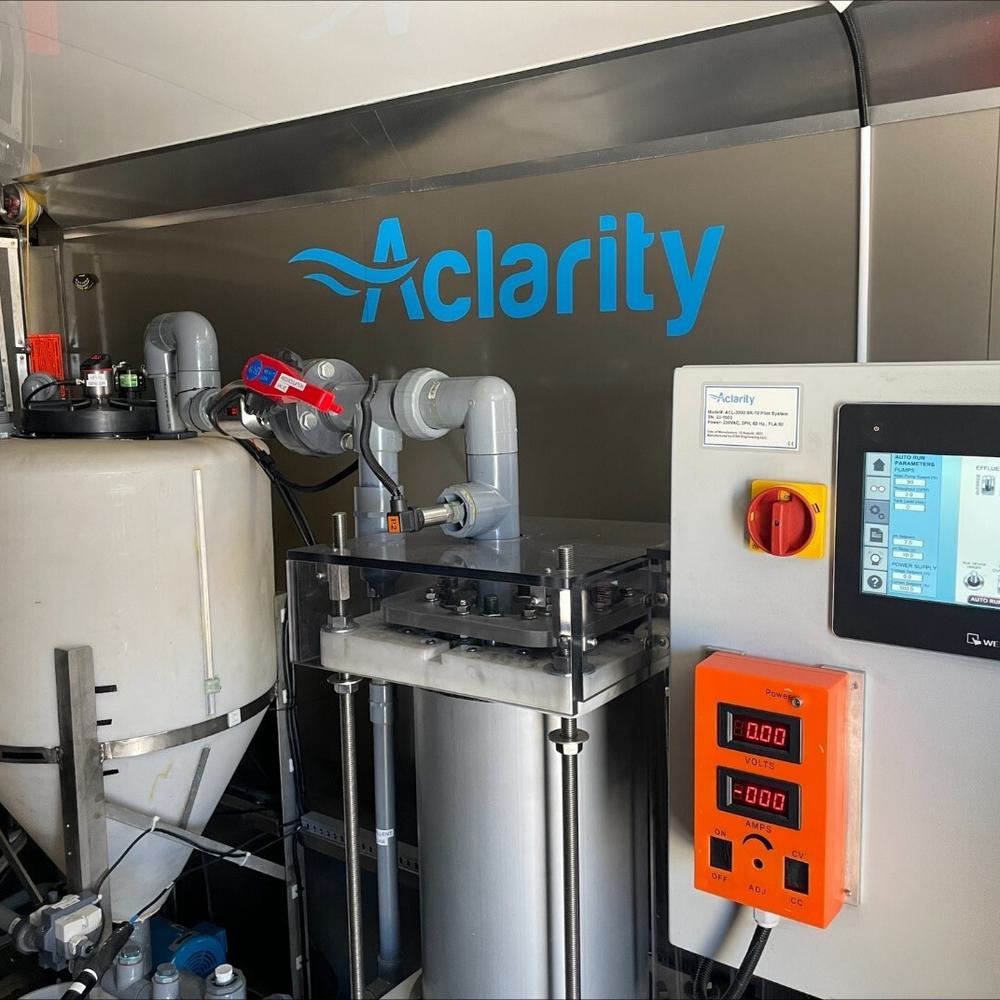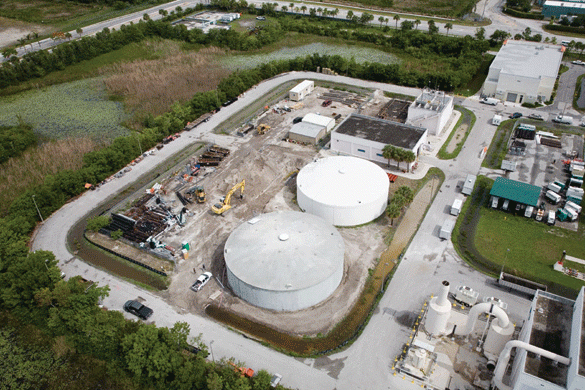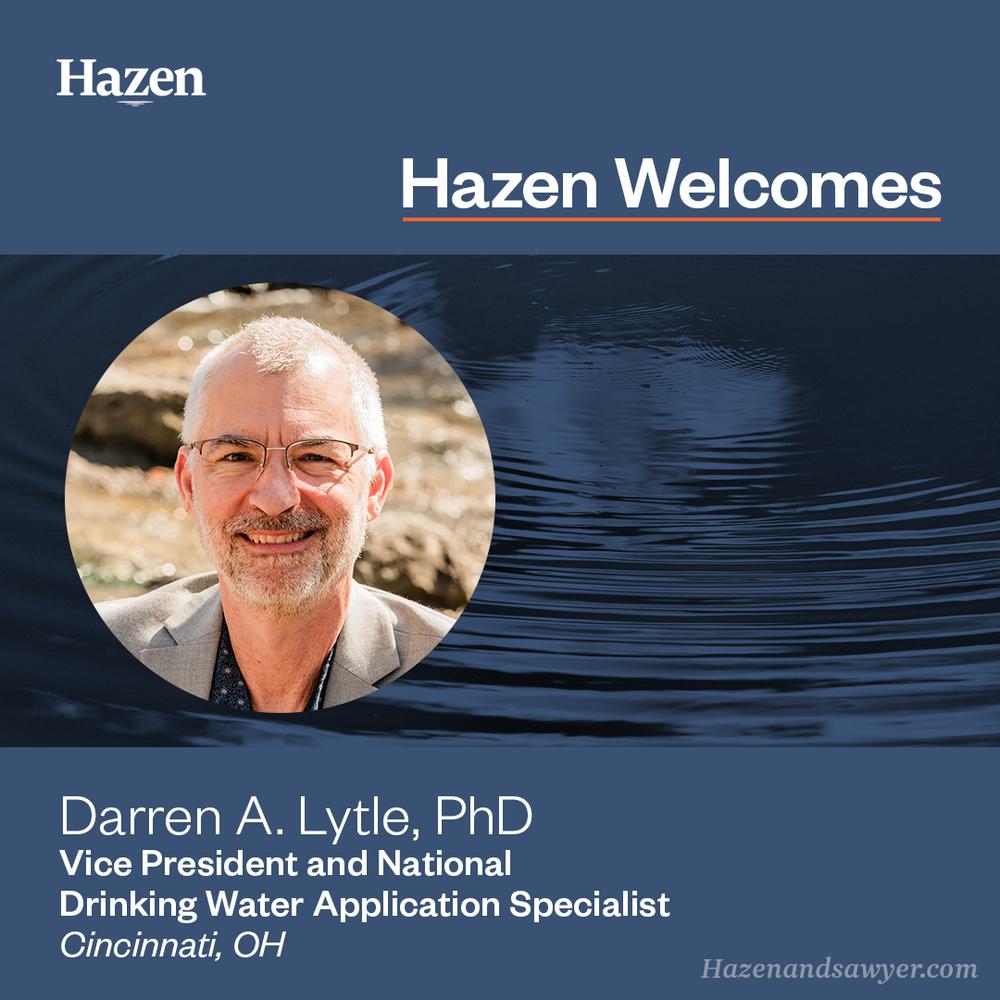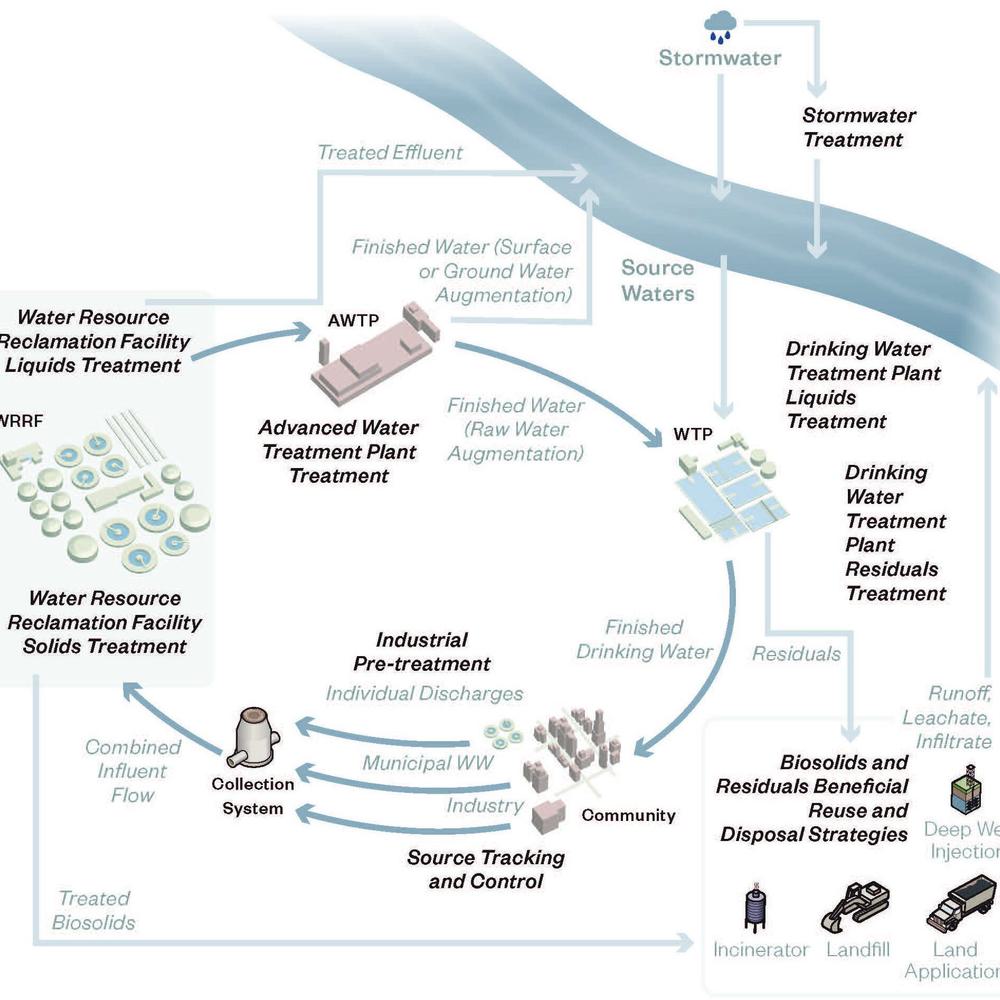Virginia Plant Achieves Groundbreaking Nitrogen Removal Technique at Full Scale
Within eight months of adopting a nitrogen removal technique called PANDA, Fairfax County wastewater plant cut its methanol use by an estimated 20-30%.
At a Glance
- Fairfax County and Hazen have successfully implemented an innovative nutrient removal process called PANDA (partial nitrification-denitrification-anammox) at the Noman M. Cole Jr. Pollution Control Plant. It’s one of the first plants in the world to operate PANDA at full scale, and the first ever to prove it works for a configuration with tertiary moving bed bioreactors (see below for what that means).
- Since adopting PANDA, the plant has continued to meet a strict total nitrogen limit of 3 milligrams per liter (annual average) in its treated wastewater.
- In the first eight months, the plant used 5-10% less energy and 20-30% less methanol, a chemical used in treatment, compared to 2021 operations.

Greg Pace has expertise in a wide range of wastewater projects, including nutrient removal studies, energy efficiency evaluations, and wastewater resource recovery facility designs.
Related Topics:
Above and animated below: A conceptual illustration of colonies of anammox bacteria, which have a reddish color
In the mid-1990s, scientists discovered a previously unknown form of bacteria living in wastewater treatment plants. The red-colored organisms grew very slowly in places devoid of oxygen. And they removed ammonia, the main form of nitrogen in wastewater, from the water through a unique process: anaerobic ammonia oxidation, or anammox.
Anammox bacteria have also been found in oceans and freshwater systems around the world and changed scientists’ understanding of the global nitrogen cycle. Meanwhile, research has shown that they can unlock a new, more efficient way to remove nitrogen from wastewater, as part of a process called partial nitrification-denitrification-anammox (PANDA).

In 2022, the Noman M. Cole Jr. Pollution Control Plant (NCPCP) in Fairfax County, Virginia, successfully adopted PANDA. It’s one of the world’s first wastewater plants to prove the process works at full scale, and the first plant ever to adopt it for a setup with tertiary moving bed bioreactors (MBBRs).*
The plant is still refining the new system with Hazen’s help. But it has already seen promising initial savings, and the successful startup marks a paradigm shift in wastewater treatment.
The promise of PANDA
Wastewater plants have traditionally used other kinds of bacteria to remove nitrogen in a two-step process:
- Nitrification: Aerobic ammonia-oxidizing bacteria (AOBs) convert ammonia into nitrite, which nitrite-oxidizing bacteria (NOBs) then convert to nitrate.
- Denitrification: A group of bacteria called denitrifiers turn the nitrate back into nitrite before converting it into harmless nitrogen gas.
While highly effective, the process requires aeration to provide oxygen to the AOBs and NOBs. The denitrifiers, meanwhile, may sometimes need supplemental carbon (such as methanol or glycerol) as an energy source. Both aeration and supplemental carbon require more energy—and more dollars.
PANDA, also referred to as PdNA, is an innovative nitrogen removal process that saves energy and carbon by adding anammox to the mix. Here’s how it works:
- Partial nitrification: AOBs and NOBs (also known as nitrifiers) nitrify about half of the ammonia coming into the plant, leaving a blend of ammonia and nitrate.
- Partial denitrification: Denitrifiers turn the nitrate into a blend of nitrite and nitrogen gas. (With PANDA, the goal is to keep the majority as nitrite.)
- Anammox: Anammox bacteria use the remaining ammonia and nitrite to produce nitrogen gas and some nitrate.
*MBBRs are tanks with bits of plastic suspended in the wastewater; the bacteria that grow on the plastic remove nitrogen and other nutrients.
If it sounds complicated, PANDA boils down to doing more with less. It uses anammox bacteria—which don’t need oxygen or supplemental carbon—to tackle nitrogen removal traditionally completed by nitrifiers and denitrifiers. That can potentially save energy, carbon, and money compared to the traditional, two-step process.
Wastewater treatment plants have seen such savings after implementing deammonification techniques* like PANDA in their full-scale sidestreams.* But harnessing it for mainstream wastewater (the main flow of wastewater through a plant) has proven elusive. Fairfax County and Hazen are one of the first teams to prove PANDA can achieve mainstream deammonification in a full-scale plant with low nutrient limits.
*Deammonification techniques: nitrogen removal strategies bypassing some of the steps used in full nitrification-denitrification. *Sidestream: wastewater generated during the treatment of residual solids.
How the objective was achieved
Fairfax County’s NCPCP treats roughly 45 to 50 million gallons of wastewater per day (mgd), with a capacity of 67 mgd. The plant is designed to remove nitrogen through nitrification and denitrification in its activated sludge tanks (AST) and tertiary MBBR systems.
Hazen first partnered with NCPCP to prove PANDA could work within that existing setup. The tabletop-sized pilot they tested was successful, so the team created a full-scale implementation plan. The plan included instructions for each step of the process and for course corrections. Hazen also helped educate roughly 40 staff about PANDA to obtain their buy-in to ensure success.
Startup began in August 2022. With help from Hazen, plant staff began gradually:
- Sending less oxygen into the activated sludge tanks (ASTs)
- Sending less methanol into the ASTs and tertiary MBBR tanks
The team adjusted operating conditions until they had the right mix of nitrifier, denitrifier and anammox activity. Throughout implementation, a Hazen process engineer worked with NCPCP staff onsite at least three days a week and remained on call offsite.
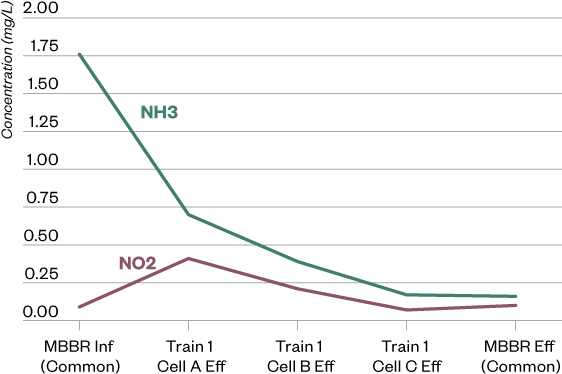
Within a few months of adopting PANDA, the NCPCP began seeing high ammonia removal in its MBBR tanks—a strong indication of success. On December 8, 2022, for example, the anammox bacteria in one tank removed about 1.4 milligrams per liter of ammonia. (Anammox removal happens in cells A and B.)
High-quality results and lower spending
Within about a month, the team began seeing indicators of robust anammox activity. Since then, NCPCP has successfully used PANDA to keep total nitrogen levels below an annual average of 3 milligrams per liter (mg/L). The plant also stayed within a total phosphorus limit of 0.18 mg/L by further adjusting aeration in the secondary tanks and continuing to add metal salts—chemicals used for phosphorus treatment—to the tertiary process.
By Hazen’s estimate, in the first eight months, the plant used 20-30% less methanol and 5-10% less energy per pound of nitrogen removed.
We’re continuing to help NCPCP further refine the new system. In the meantime, the success of the first few months marks a major development in turning PANDA from a theory into a reality.
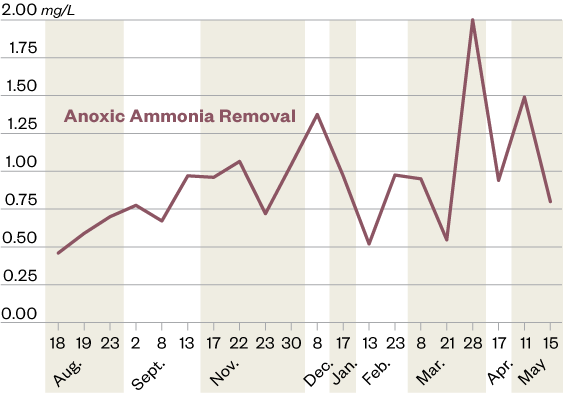
As ammonia levels rose in the tertiary moving bed bioreactor tanks, anammox bacteria colonies there began to grow and consume more.



